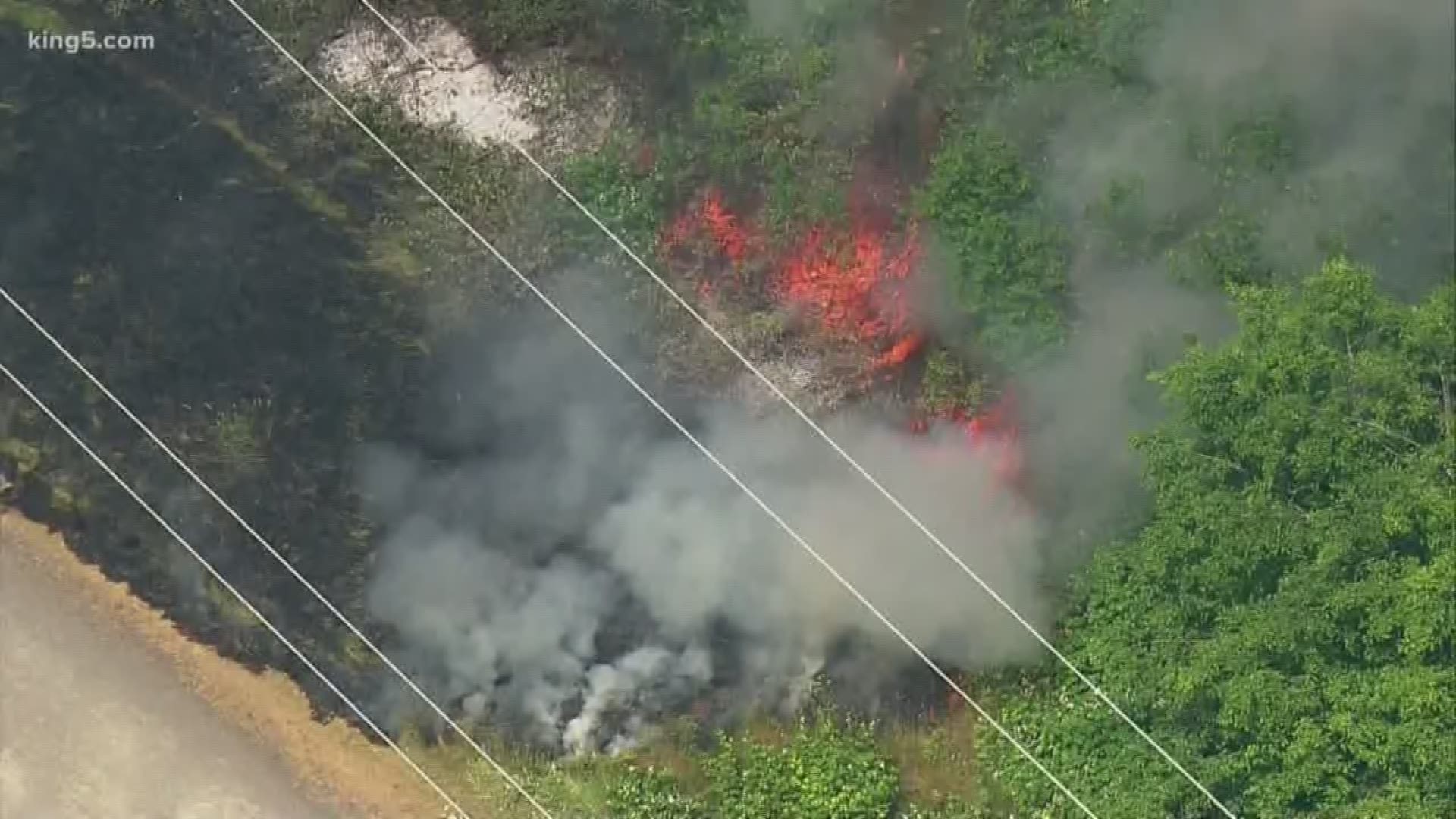Homeowners who live near forests or other heavily wooded areas can take steps to protect their home in case of a wildfire. The key is not only to get flammable vegetation away from your home but also make sure trees are not too close together and your lawn is well manicured.
According to readyforwildfire.org, your defensible space is divided into two zones.
Zone 1 should extend 30 feet from your home. Remove all dry and dead vegetation including grass, weeds, leaves, and pine needles. This means cleaning these items from your roof and gutters.
Any branches that hang over your roof should be removed. Make sure branches are at least 10 feet from your chimney.
Any flammable plants or shrubs near windows should be pruned or removed. Remove any flammable vegetation that is around or under your deck.
Because fire can jump from one place to the next, make sure you keep plenty of space between flammable items such as shrubs, patio furniture and swing sets or other backyard toys.
Move wood piles into Zone 2, which is between 30 and 100 feet from your home. Grass in Zone 2 should be cut to four inches or less.
In Zone 2, trees should be at least 10 feet apart if you're on flat land. On a 20-40% slope, they should be 20 feet apart. Trees on a 40% or steeper slope should be at least 30 feet apart.
Measure your shrubs in Zone 2. On flat land, the space between them should be double the size of the shrub. If the shrub is six feet in diameter, keep them 12 feet apart. Make it four times the size of the shrub on a 20-40% slope and six times the size for a 40% or greater slope.
Fire also tends to climb. If you have a shrub catch fire, the tree next to it will likely go up, too. Remember the Rule of Three. If you have a five-foot-tall shrub, for example, you need to make sure the lowest branch on the tree next to it is three times that height, or 15 feet off the ground.
Here are some other standard measures according to the Washington state Department of Natural Resources.
- Clear all flammable vegetation; rake and remove from under and around structures
- Make sure trees have a 15-foot space between each other and that the branches are no lower than 15 feet from the ground
- Remove branches extending over the roof
- Prune branches and shrubs within 15 feet of a stovepipe or chimney outlet
- Ask the power company to clear branches from power lines
- Mow your grass regularly
- Clear a 10-foot area around propane tanks and the barbecue
- Regularly dispose of newspapers and garbage
- Properly dispose of stove, fireplace, and grill ashes
- Store flammable materials such as gasoline in approved safety cans and away from the base of buildings
- Stack firewood at least 100 feet away and uphill from your home
- Review and update your homeowner's insurance policy
A list of fire-resistant plants can be found here.
Even if there is no burn ban, remember to follow the regulations and take extra precautions.
It's always best if you talk with your family that lives in the home about a safety plan. Be sure that everyone knows what to do in the case of an emergency. Additionally, making a plan with your neighbors and other members of the community is encouraged.
The National Interagency Fire Center has this video on building protective zones around your home.

